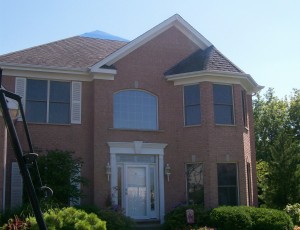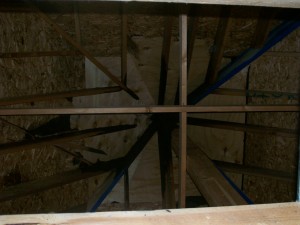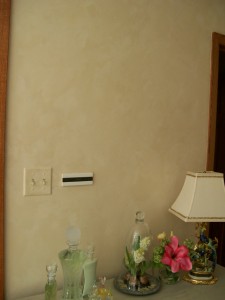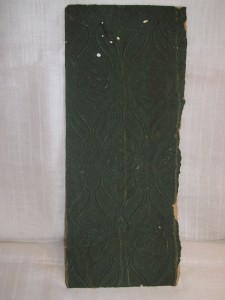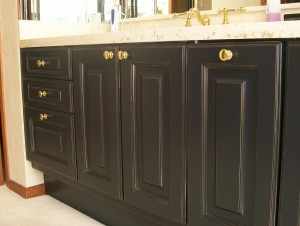Gilding is an ancient decorative painting technique. Romans were particularly found of it during the time of Plinius Secundus, around 50 AD: even the ceilings of their temples were gilded. In the United States, gilding found a place in the decoration of the interior of public buildings, the exterior of capitol domes, statues and fine residential interiors. To this day, it continues to be a technique of choice for fine decorative finishing.
Gilding consists in the laying of an ultra fine sheet of metal over an adhesive sizer (tacky varnish). Once applied, the leaves are flattened and made to cover every little bit of the surface to be decorated. The portions of the leaves that are not attached to the sizer are then brushed off. The end result looks like a continuous sheet of metal. A telling sign that something has been gilded is that the square shape of the metal leaves used in the gilding process is still visible when the work is completed.
We just completed a most interesting decorative finishing project that involved the gilding of an artful design onto a venetian plaster surface that we had earlier decorated. A wide array of materials can be gilded: metal, glass, wood, drywall, stone and plasters. Although rarely done, venetian plaster is one of those surfaces, as shown in the attached picture.
How did that project come about? The client wanted some artwork next to the shower area, but was concerned about the moisture affecting the art. I suggested gilding; they liked the idea. They showed me an etched leaf design on a lotion bottle which was on display on the vanity table. I asked our muralist to replicate that design as an ink drawing on a piece of paper, as shown in the next picture. I then asked our sign maker to digitize that same drawing, enlarge it to the desired size (24” wide and 36” high) and create a vinyl stencil. By the way, this is the same technique used in painting a sign, except that , in this case, the subject matter was a leaf design, not letters. Once the vinyl stencil was perfected mounted on the wall, we were ready to do the gilding process. Before removing the vinyl, we applied a coat of varnish over the metal leaf to protect it from oxidization.
This was a fun project for both the client, our decorative finishing people and our company. It is always a pleasure for the folks at Painting in Partnership, from the Chicago area, to combine the talents of many people in creating a result that is artful, creative and long lasting.







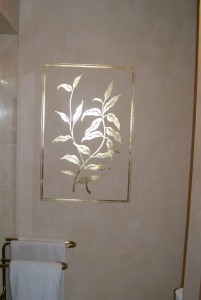
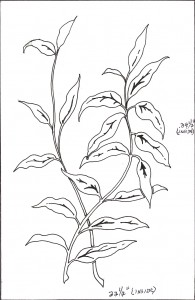
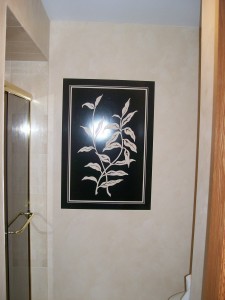
 Follow
Follow

